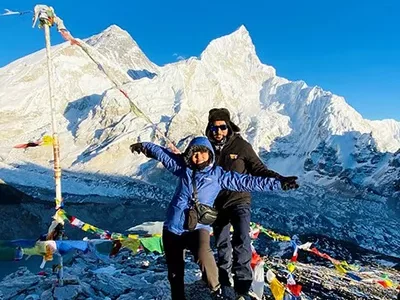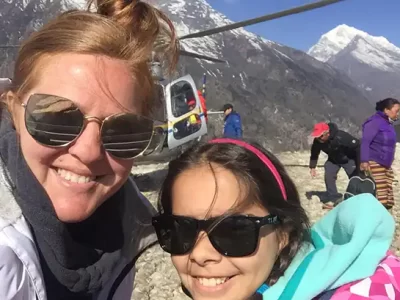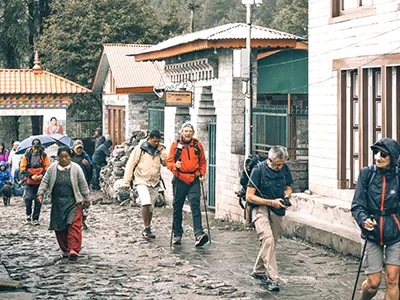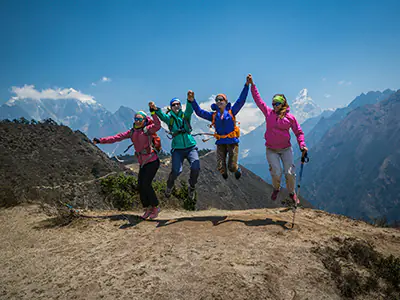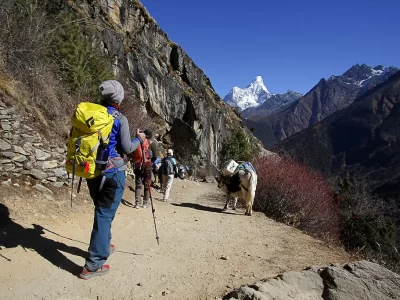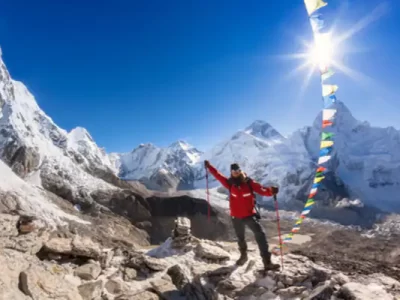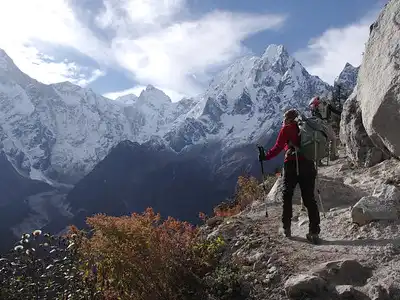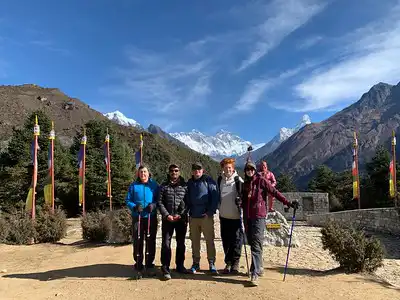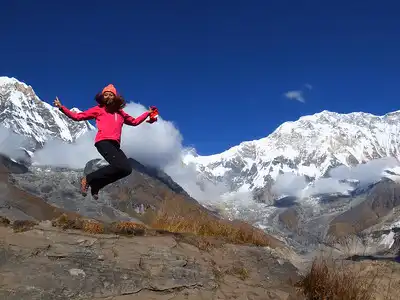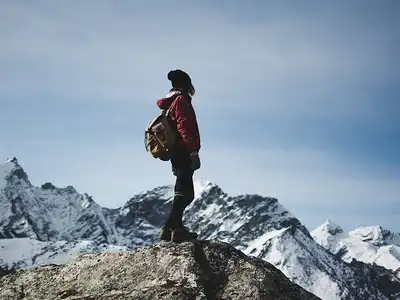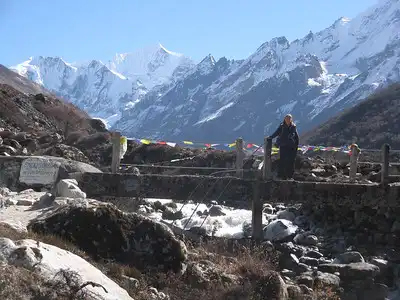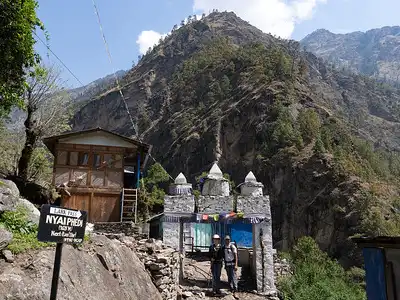Tengboche Monastery nestles in the grand Himalayan ranges in Nepal’s Khumbu region. It provides both spiritual comfort for people and cultural heritage. It is also famous as Tengboche Gompa, equally influencing the lives of the Sherpa community. Despite natural disasters as well as numerous attempts at renovation, it still lures tourists all over the globe with its divine spirit and historical appeal.
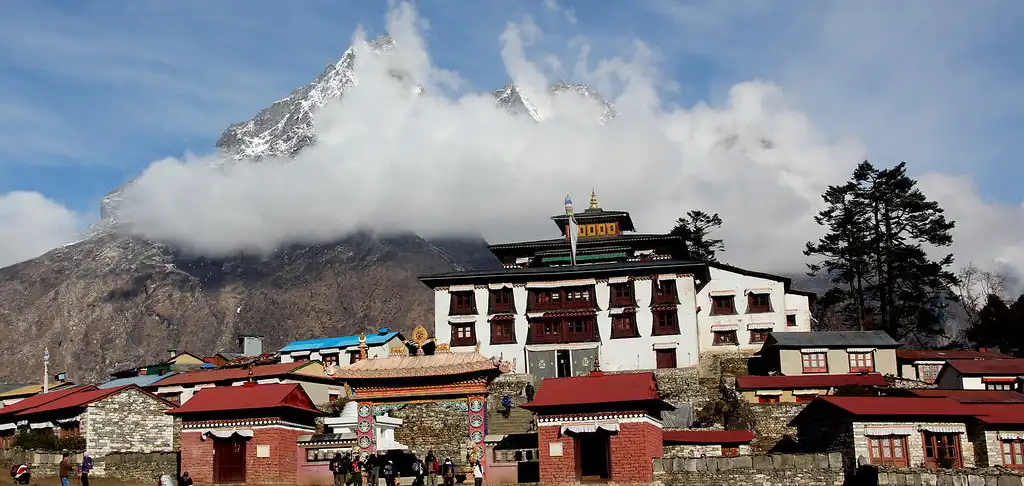
Every year, thousands of trekkers tread the path from Tengboche to Everest Base Camp. They stop by the monastery to enjoy its peaceful and spiritual aura. Apart from providing a space for relaxation, this essential milestone in the trip also gives visitors a chance to explore the Sherpa heritage, which is rich in the cultural tapestry of the Sherpas and Buddhist customs. Placed in such a way as is, the monastery stands as a suitable precinct for spiritual replenishment and acclimatization, allowing one to have a sneak preview of how spiritual matters and nature converge to give an area its real meaning.
The trek to Tengboche Monastery Nepal is more than a physical trek; it is actually a soul-nourishing pilgrimage. Natural beauty and serenity characterize these paths through which pilgrims reach Tengboche Temple, such that going there is as satisfying as being there. The Gompa, decorated by lively prayer flags as it looks at the whole Himalayas, remains a place where one can find inner tranquility, thus becoming an indispensable spot for every mountain hiker or person pursuing spiritual fulfillment.
Everest Base Camp Trek
Everest Base Camp Trek with Helicopter Return
Luxury Everest Base Camp Trek
History of Tengboche Monastery
Lama Gulu created the Tengboche Monastery in 1916, and it has served as a spiritual center in the Khumbu region for over a hundred years. It was initially built to cater to the religious requirements of the indigenous Sherpa population but has diversely metamorphosed into a primary focus point for Buddhism and an attraction site for faithful followers.
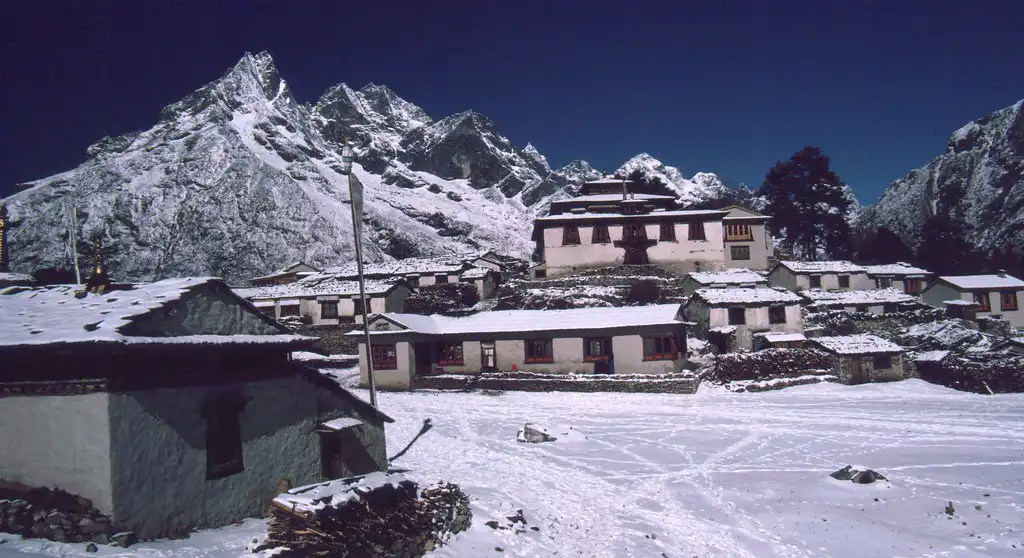
This monastery maintains deep ties with Rongbuk Monastery in Tibet, sharing similar architecture and rituals, adding a shared heritage to its rich history, and creating cultural ties between Tibet and Nepal Tengboche. The monastery also carries a spirit of resilience, a history of devotion, and danger. After its foundation in 1916, the monastery fell into disrepair.
An earthquake destroyed it in 1934, prompting its later reconstruction. It was destroyed by fire in 1989, burning almost all its valuables. Nevertheless, with local and international support, they were able to rebuild. Tengboche Monastery is not only a magnificent place, but it is also known for its great historical and cultural importance. It stands as a powerful symbol of Sherpa’s history, spirituality, resilience, and identity.
Architectural Significance
Traditional Tibetan Buddhist features characterize the architectural structure of Tengboche Monastery, which is typical of the Himalayan region.
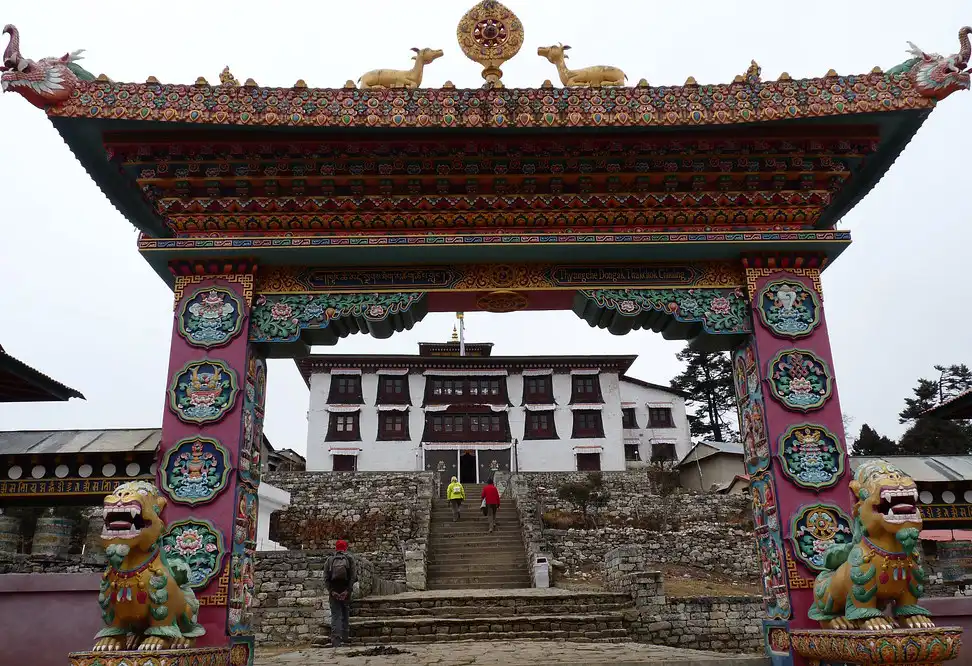
The monastery’s design encompasses living quarters for monks around a central courtyard alongside guesthouses where travelers can stay. From this courtyard, one can access the main prayer hall – the most memorable part of this monastery, both spiritually and architecturally.
Distinctive Features: Prayer Hall and Murals
The Prayer Hall or Gompa Tengboche Monastery stands as a masterpiece of sacred architecture. The hall, designed for accommodating large gatherings, is spacious and well-decorated, facilitating prayers and religious ceremonies. It has beautifully painted colorful paintings on its walls and ceiling depicting Buddhist mythology, including the lives of the Buddha and other mythical figures. These murals are not only spiritually inspiring, but they also provide religious education for visitors and patrons.
Also, a beautifully carved statue of Buddha placed in the center enhances the spiritual atmosphere of the prayer hall, serving as a focal point for meditation and prayer. This statue enhances the hall with beautifully decorated thankas (with Tibetan silk embroidery), making it an inviting place because meditation and worship make the monastery beautiful but emphasize the monastery’s role as a center of Buddhist teaching and spiritual practice.
Religious Importance
The Tengboche Monastery is an important spiritual and cultural center in the Sherpas community, actively promoting religious practices and preserving traditions under the principles of Mahayana Buddhism. It not only hosts spiritual rituals and major community festivals but also educates young individuals on how to become monks.
The walls of this monastery preserve many sacred objects and statues that are important for its religious functions. These include ancient scriptures, ritual tools, and gods and idols, prominently displaying the Sakyamuni Buddha statue in the main prayer hall. Tengboche also has good gratitude, which is actively used in teaching and meditation to provide spiritual strength to the monastery and visitors.
Festivals at Tengboche Monastery Region
Before making a trip to Tengboche Monastery, please check out the festival schedule to watch the vibrant activities firsthand. Tengboche Monastery, being a vibrant cultural hub, organizes several events each year that can give you a peek into the vivid and diversified culture of the Sherpa people living within that area. It is these celebrations that draw thousands apart from their geographical and environmental background.
Mani Rimdu Festival
For centuries, the Mani Rimdu Festival has been an important religious and cultural event at Tengboche Monastery in the Solu-Khumbu region of Nepal. Usually celebrated during the full moon in November, this three-day festival is a cornerstone of Sherpa’s cultural and religious identity.
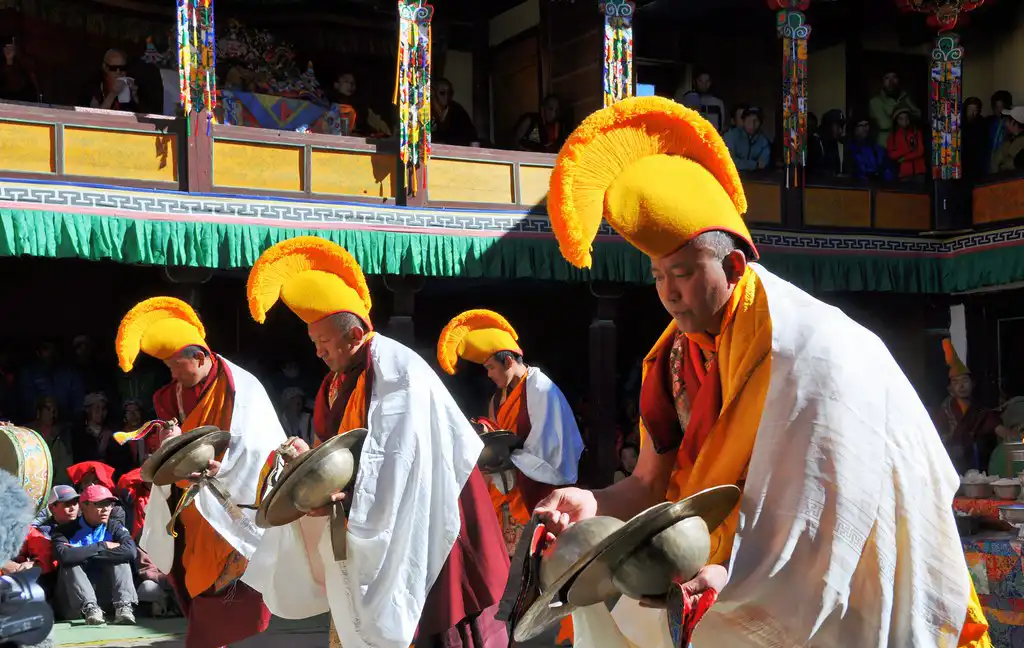
The festival takes place at Tengboche Monastery, an important Buddhist site in Nepal at an altitude of 3,860 meters (12,660 feet), with breathtaking views of the Himalayas, including Mount Everest.
Named after the Tibetan prayer flag “Mani” and Sherpa folk dance “Rimdu,” the highlight of the festival is the “Chham,” or umbrella dance, executed by the monks of Tengboche Monastery.
Visual Representation of Good and Evil
The mask dance is a vivid depiction of the battle between good and evil, performed in honor of the gods and to ask for their blessings. The festival includes rituals over the three days, including the creation and destruction of sand circles. In Tibetan Buddhism, monks carefully create these colorful sand paintings representing the universe over a number of days, then cut them up on the last day to emphasize the transience of life.
Another highlight of the festival is the “empowerment” ceremony, held on the second day of the festival. During this ceremony, monks offer spiritual strength and blessings to those present, enhancing their spiritual connection and well-being.
Dumje Festival
Every year in July, Tengboche Monastery celebrates the Dumje Festival, a major cultural event in honor of Khumbila, the deity worshiped by the Sherpas as the guardian of the area.
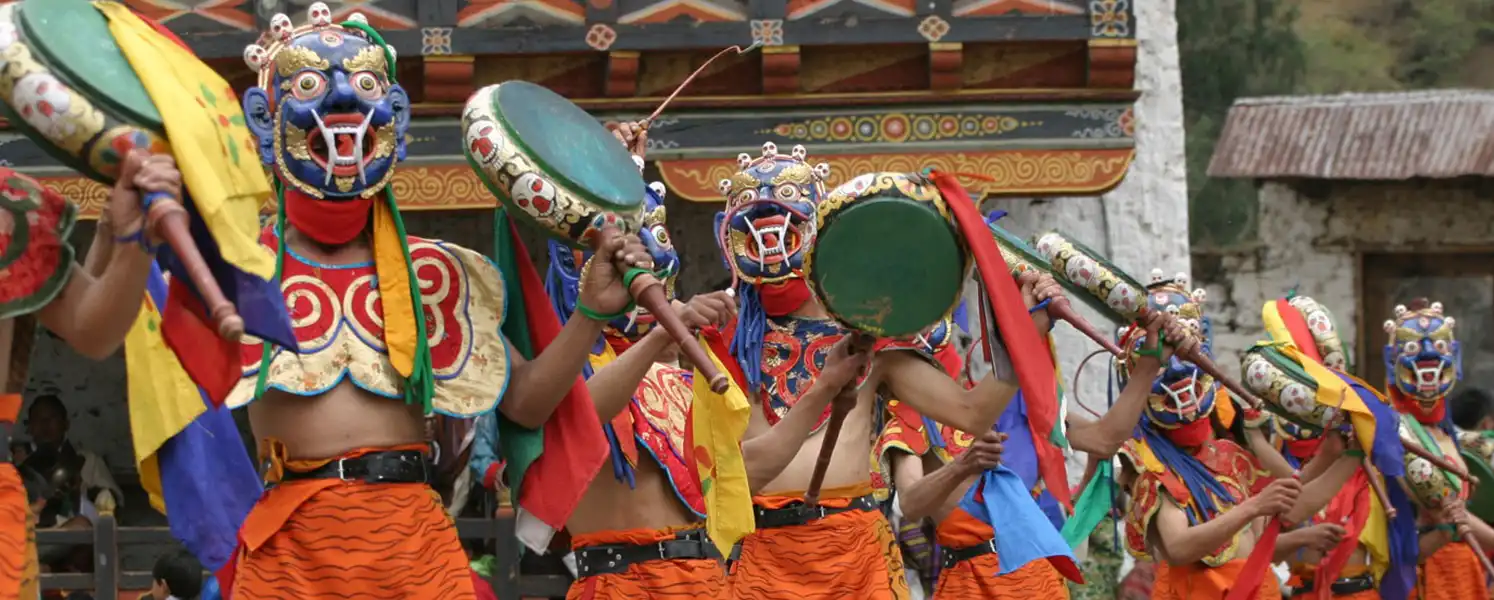
The celebration of the Dumje Festival begins with a special worship or prayer ceremony in the main prayer hall of Tengboche Monastery. Here, the monks perform rituals and prayers in honor and blessing of Khumbil, accompanied by traditional instruments such as dungeon (long horns) and the rhythmic sounds of drums.
A special ritual during the Dumje festival is the lighting of thousands of butter lamps in and around the monastery. This glittering display is not only a spectacular sight but a symbol of the community’s hope for happiness, health, and prosperity.
Cham Dance and Athletic Events
As part of the celebration, the monks of Tengboche Monastery sing the Cham dance—a sacred masked dance that tells the story of the triumph of good over evil. This dance is distinctly traditional, performed with great vigor, and with traditional music and music are included.
The Dumje Festival consists of various cultural activities and sports, including archery, horse racing, and other traditional games. Locals and visitors alike enjoy these activities, which play an important role in the festival. The main attraction is the horse racing event, which takes place on a challenging course through the rugged terrain of the Khumbu district, adding a fun and dynamic element to the festival.
Everest Base Camp Trek for Beginners
Everest Base Camp Short Trek
Jiri to Everest Base Camp Trek
Experiencing Local Life
In addition to the breathtaking views of the Himalayas and the spirituality of Tengboche, exploring local life in Tengboche offers a unique opportunity to connect with the Sherpa community and immerse yourself in their daily lives. The local cuisine, adapted to the altitude, offers delicacies such as potatoes, yak cheese, dal-bhat (rice-millet-), tsampa (millet flour), dido, momo, thukpa, snacks, and other healthy options to enjoy.
If you plan to spend a day or two in Tengboche village, consider engaging in daily activities such as tending crops or milking yaks, or check these out as a window into Sherpa life. You can participate in cultural festivals and traditions. Known for their hospitality and friendliness, the Sherpas readily share information about their history, customs, and heritage, creating a unique cultural experience.
Walk through the village and enjoy a legendary Tengboche apple treat at the Tengboche Bakery, all while sitting behind high Himalayan peaks and interacting with the Tengboche community; even something as simple as a cup of tea can turn your visit into a meaningful cultural exchange.
Best Time to Visit Tengboche Monastery
The best time to visit Tengboche Monastery varies depending on the purpose of your visit. Preferences may differ between those eager to experience the region’s majestic mountains and those intent on traditional travel.
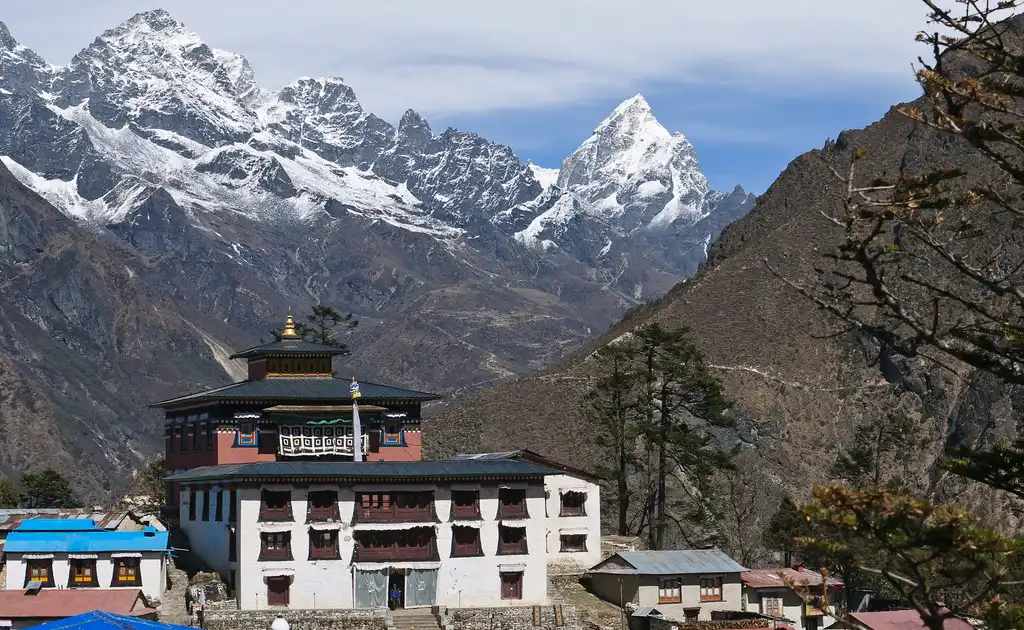
The best times for travelers planning to stop at Tengboche Monastery are autumn (September to November) and spring (March to May). These months offer the best conditions for trekking in Nepal, allowing you to complete the Everest trek with few physical comforts or seasonal restrictions. In addition, a visit in the fall offers an opportunity to experience the Manirimadu festival.
On the other hand, if you’re interested in seeing snow-covered territory, which offers amazing silver views across the mountain in a more tranquil setting, winter treks aren’t available for a few. Although winter treks to Tengboche Monastery are possible, they are generally not recommended due to the chance of sudden heavy rain.
Tengboche in Trekking Routes
Located on many famous good trails, including the Everest Base Camp trek, Tengboche Monastery is an important staging area for high-altitude trekkers. It offers a unique blend of cultural richness and spiritual relaxation, marking it as a travel revelation.
You can try to coincide your visit with daily worship at the monastery to delve deeper into Sherpa culture and Buddhist rituals and better include Tengboche in your itineraries. A relaxing day in Tengboche not only helps you acclimate to the weather but also gives you the opportunity to explore the monastery and the surrounding area more fully.
Travel Tips and Etiquettes
A visit to Tengboche offers a wide variety of experiences. However, in order to ensure a pleasant yet respectful visit, it is important to keep in mind an overview of the monastery’s cultural and spiritual significance.
Trek Preparation
Spring and autumn are the best times to visit Tengboche Monastery because of the good weather. These moments leave you in awe of the beauty of the mountains without being too cool. Visiting in the fall also coincides with your trip to the Manirimdu festival, enhancing your experience. Please prepare well in advance for the Tengboche Monastery trek to make sure you are in good physical shape, as the trek can be arduous.
Venture properly in Namche Bazaar to reduce the risk of altitude sickness. Safe travel insurance includes helicopter evacuation in case of emergency. Using a local guide and porter not only makes your trip easier but also helps the community.
Cultural Sensitivity
Since Tengboche Monastery has great religious significance, it is important that you first learn about proper etiquette.
Before entering the monastery, always remove your shoes and keep your voice down to respect the meditation area.
Ask permission before taking pictures, especially in restricted areas, and avoid using flash to avoid harassment.
Use respectful greetings such as ‘namaste’ with slight bows and folded hands to show courtesy and respect for the monks.
One should avoid touching monks or religious objects inside the monastery.
Join the evening aarti to see monks praying in the light of ghee lamps.
Keep cleaning the surrounding sacred monasteries, and don’t litter.
Ask for a blessing from Resident Rinpoche, the revered teacher of the monastery.
Conservation Efforts
Tengboche Monastery is actively involved in programs for the preservation of its historic buildings and sacred objects. It tackles landslides and hazards resulting from environmental and human activities by implementing routine maintenance, restoration projects, and educational programs that stress the importance of protecting both visitors and local communities.
It emphasizes that tourism provides economic benefits and places greater emphasis on the interior and environment of the monastery. It works with local and international conservation groups to ensure that visitors contribute effectively to conservation efforts.
Conclusion
An important spiritual and cultural cornerstone of the Khumbu district, Tengboche Monastery embodies the spirit of Mahayana Buddhism and Sherpa heritage and not only serves as a venue for religious practices and community gatherings but also protects a wide range of cultural artifacts and traditions.
The preservation of this historical site is important, so tourists should respectfully and conscientiously engage in observing local customs and supporting conservation initiatives. By responsibly visiting Tengboche Monastery, we help ensure its spiritual heritage and cultural significance for future generations.

